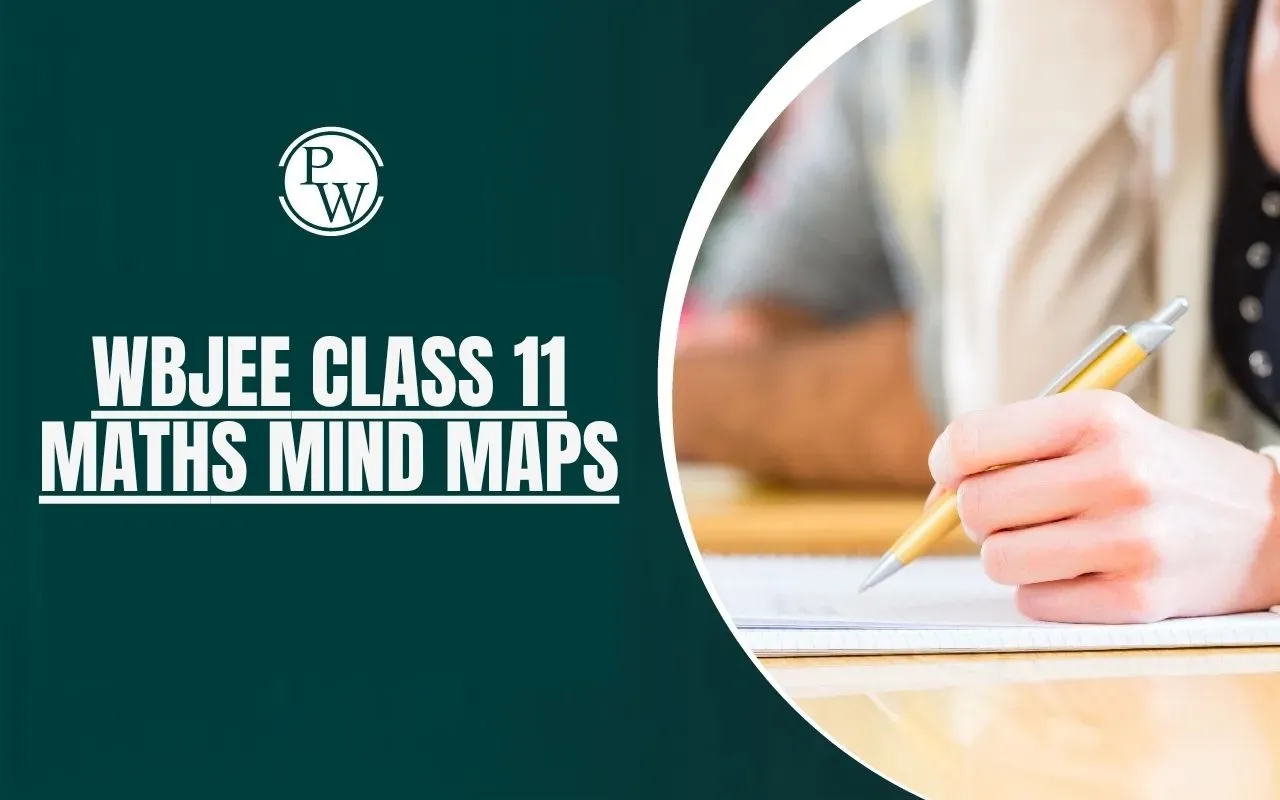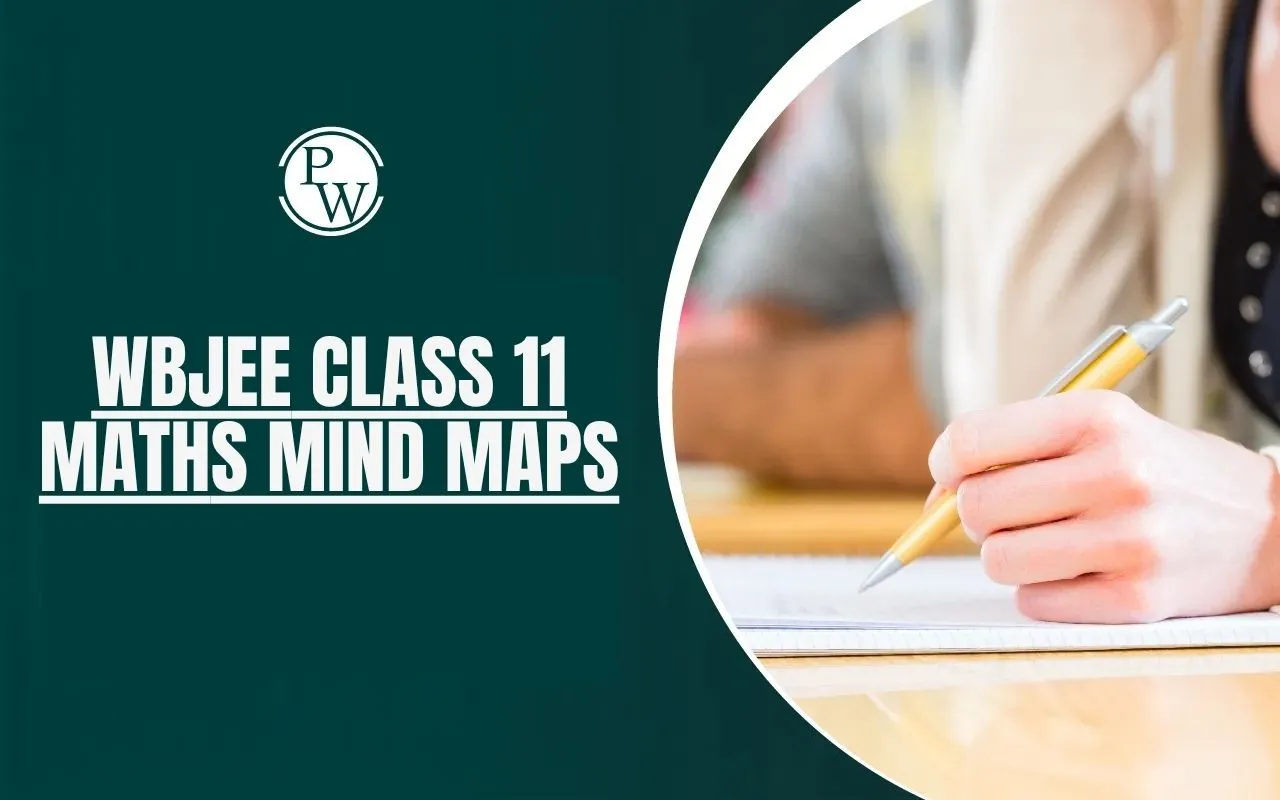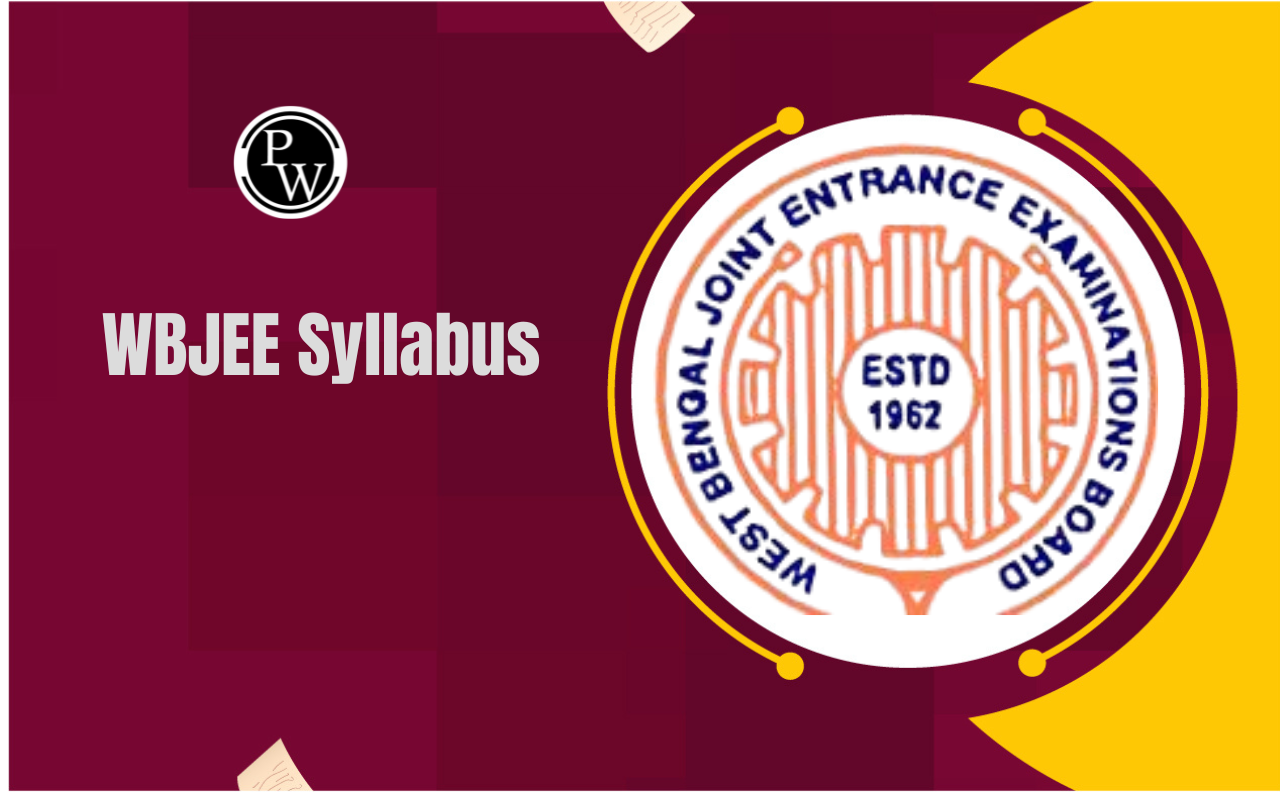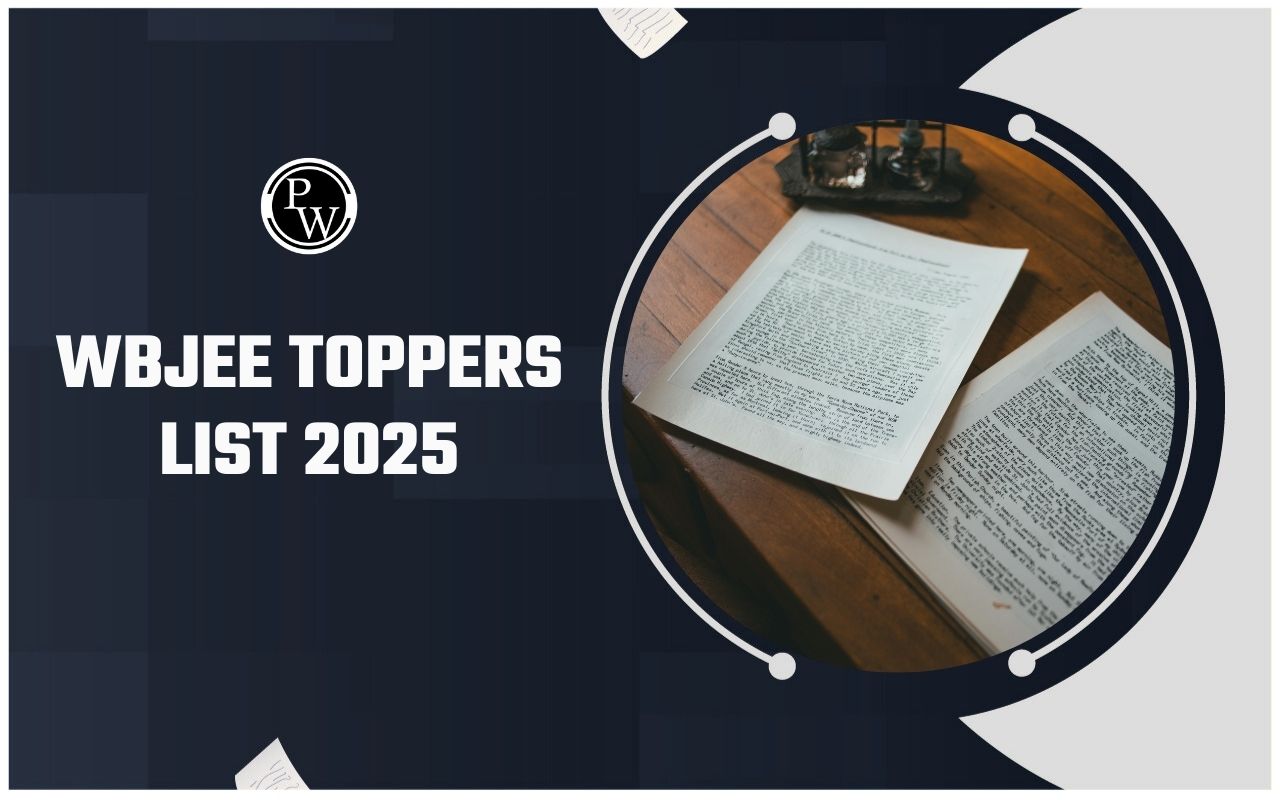

WBJEE Class 11 Maths Mind Maps offer a visual and structured way to understand and revise key concepts as per the latest syllabus and exam pattern. These mind maps cover essential topics like algebra, coordinate geometry, trigonometry, and calculus, helping students connect formulas, theorems, and applications in a simplified manner.
They are particularly useful for quick revisions before the exam and work as an effective supplement alongside textbooks and previous year papers. By linking chapters and highlighting important areas, these mind maps improve retention, boost conceptual clarity, and prepare students to tackle the WBJEE exam with greater confidence.
WBJEE Class 11 Maths Mind Maps
To help students prepare effectively for the WBJEE exam, we have provided chapter-wise Class 11 Maths mind maps below. These visual tools are based on the latest WBJEE Syllabus and exam pattern, making revision easier and more structured. Check the links below to access and download the PDF mind maps for quick and clear concept understanding.
|
WBJEE Class 11 Maths Mind Maps |
|
|
Topic |
Mind Map PDF |
|
Sets |
|
|
Relations |
|
|
Trigonometry |
|
|
Quadratic Equations |
|
|
Complex Numbers |
|
|
Sequence and Series |
|
|
Permutations and Combinations |
|
|
Binomial Theorem |
|
|
Straight Lines |
|
|
Circles |
|
|
Parabola |
|
|
Ellipse |
|
|
Hyperbola |
|
|
Limits |
|
|
Differentiation |
|
|
Mathematical Reasoning and PMI |
|
|
Statistics |
|
|
Probability |
|
Also Check: WBJEE 2025 Most Asked Chapters and Weightage for All Subjects
Detailed Overview of WBJEE Class 11 Maths Mind Maps
Here’s a Detailed Overview of WBJEE Class 11 Maths Mind Maps:
1. Sets
This mind map covers concepts like types of sets, Venn diagrams, union, intersection, and complement. It simplifies symbols and properties, making set theory easier to visualize and remember.
2. Relations
Includes ordered pairs, domain, range, and types of relations like reflexive, symmetric, and transitive. It helps clarify how sets are linked and related through mapping.
3. Trigonometry
Highlights formulas, identities, and functions along with their graphs. It's useful for revising angle conversions, values of trigonometric ratios, and solving equations.
4. Quadratic Equations
Summarizes standard forms, nature of roots, and factorization methods. The mind map visually connects formulas like the quadratic formula and discriminant analysis.
5. Complex Numbers
Presents key operations like addition, subtraction, modulus, and argument. It also maps conjugates and polar forms for better conceptual clarity.
6. Sequence and Series
Covers arithmetic and geometric progressions, nth term, and sum of series. The flowchart-style visuals assist in memorizing formulas quickly.
7. Permutations and Combinations
Explains the logic of counting, factorials, and real-life applications. It’s great for understanding difference between arrangement (permutation) and selection (combination).
8. Binomial Theorem
Shows expansion formulas, Pascal’s triangle, and term identification. The structure helps in solving expansion-based problems efficiently.
9. Straight Lines
Includes slope, intercepts, angle between lines, and general equations. The mind map breaks down different forms like point-slope and two-point forms.
10. Circles
Provides geometric properties, standard equation, and parametric coordinates. It visually links circle elements like chord, tangent, and radius.
11. Parabola
Details the standard equations, focus-directrix properties, and applications. Useful for visualizing how changing parameters affects the graph.
12. Ellipse
Covers major and minor axes, focal properties, and standard forms. The mind map is helpful for quick differentiation from circles and parabolas.
13. Hyperbola
Shows asymptotes, conjugate axes, and standard equations. It simplifies the understanding of hyperbolic curves and their orientation.
14. Limits
Illustrates left-hand and right-hand limits, standard limits, and algebra of limits. It forms the base for understanding continuity and calculus.
15. Differentiation
Includes derivative rules, chain rule, and applications in slopes and rates. Visual links help understand function behavior and graphical meaning.
16. Mathematical Reasoning and PMI
Covers logical statements, connectives, truth tables, and mathematical induction. It strengthens reasoning required in proofs and logical deductions.
17. Statistics
Highlights mean, median, mode, and standard deviation. The flow of formulas and step-by-step methods help in solving data-related problems.
18. Probability
Explains outcomes, events, and probability rules including conditional and independent events. A key tool for mastering chance and logic-based questions.
WBJEE Class 11 Chemistry Mind Maps
Benefits of Using WBJEE Class 11 Maths Mind Maps
Below we have provided some of the benefits of using WBJEE Class 11 Maths Mind Maps -
Quick Revision: Mind maps provide a visual summary of complex Maths concepts, making it easier to revise entire chapters in less time.
Concept Clarity: They simplify topics like trigonometry, calculus, and coordinate geometry by showing relationships between formulas and properties.
Better Retention: The graphical format improves memory retention and helps recall formulas and concepts during the exam.
Exam-Focused Preparation: Mind maps are aligned with the WBJEE syllabus and exam pattern, helping students focus on relevant topics.
Time-Saving Tool: Instead of rereading long textbook explanations, students can glance at mind maps for a quick refresh.
Effective Problem Solving: With clear visualization of steps and methods, students can apply concepts better while solving numerical problems.
Useful with Previous Year Papers: They work as an excellent companion while practicing WBJEE Previous Year Question Papers, allowing fast cross-reference of concepts.
Boosts Confidence: Structured and simplified presentation of topics helps reduce exam anxiety and boosts confidence in Maths preparation.
WBJEE Class 11 Maths Mind Maps FAQs
What are WBJEE Class 11 Maths Mind Maps?
Are these mind maps based on the latest exam pattern?
Can I use these mind maps for last-minute revision?
Do these cover all the important Maths chapters?













